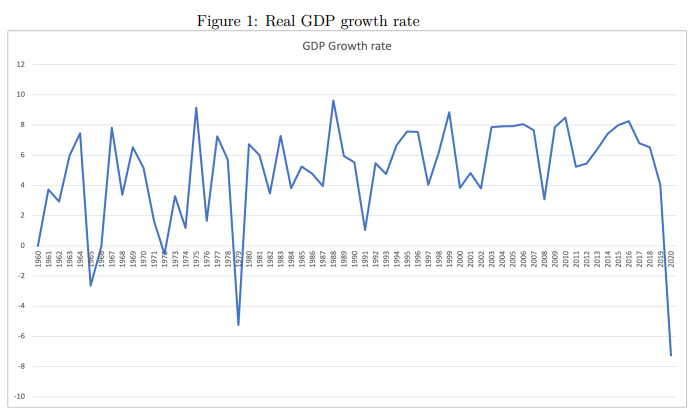Post-COVID recovery and long-run forecasting of Indian GDP with Factor-augmented Error Correction Model (FECM)
DOI:
https://doi.org/10.54945/preserve.9Keywords:
Forecasting, Dynamic Factor Model, FECM, ARIMA, IndiaAbstract
This paper attempts to estimate long-run forecasting of Indian GDP for the post-COVID period using the factor error correction model (FECM). The model builds on a dynamic factor model that directly and indirectly captures many dimensions affecting the cycles of a macro variable. Availability of big data enables the extraction of some common factors from large dimensions, which essentially produces better precision of forecasting estimates. The method first extracts leading factors and then add proxy policy variables to establish their long-run relationship with the GDP and produces insignificant in-sample bias. The relationship has been employed to predict GDP for 2022-35. We found three major dynamic factors that capture 80% of variations of 56 quarterly variables of the Indian economy. These three factors with four lags and four exogenous policy instruments have been included in the FECM model for forecasting estimation. We find that the economy is expected to grow at 4-8% annually, depending upon the actual realisation of external shocks and policies. The expected rise of temperature and oil price seems to be dampening the growth. But, the institutional reforms making effective public investment and the introduction of digital currency that reduces cash requirements could play an expansionary role. If the oil price and the temperature remains at the current level, the growth rate can go closer to 8%.


